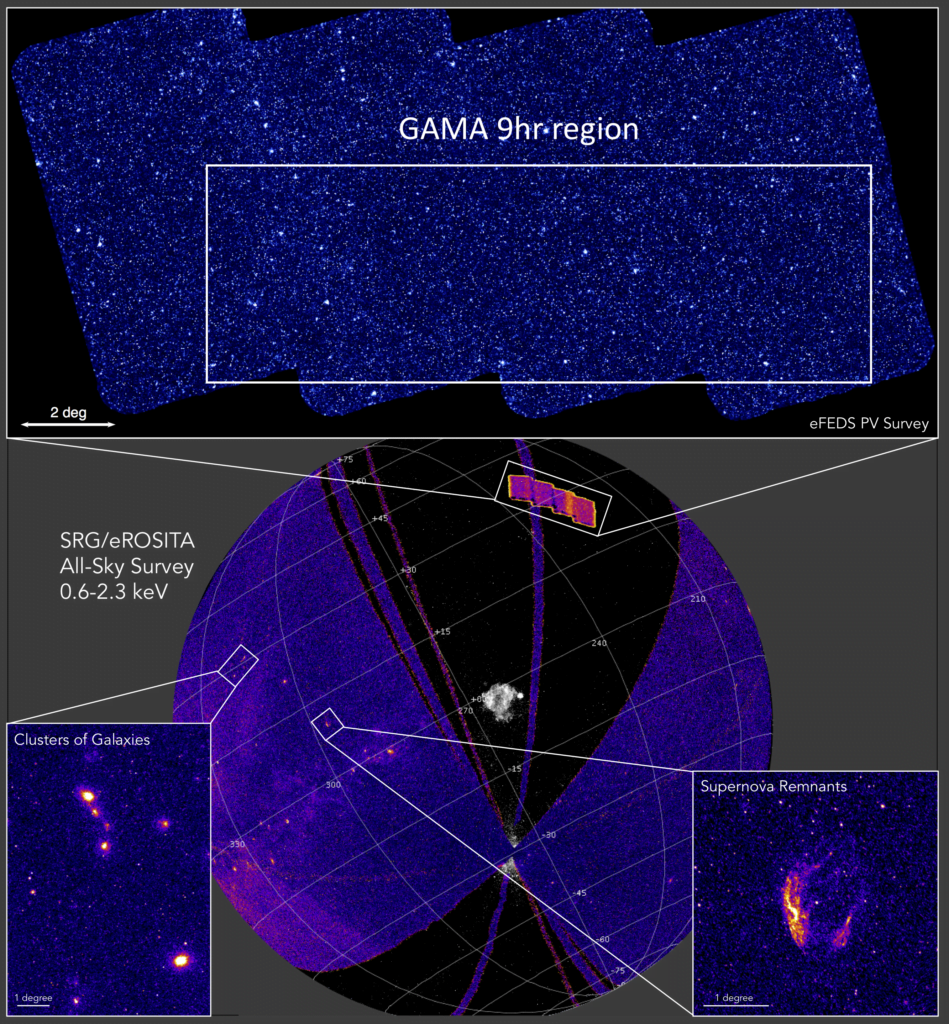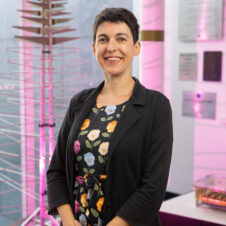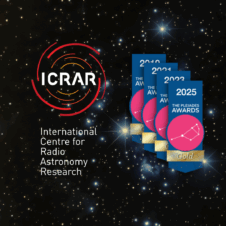Opening a 3D X-ray eye onto the Universe: eROSITA-GAMA MoU signed
Astronomers at the UWA node of the International Centre for Radio Astronomy Research have today signed a Memorandum-of-Understanding with the German eROSITA team to join forces and combine their respective data to address some of the outstanding questions in astronomy today.
eROSITA (extended Roentgen Survey with an Imaging Telescope Array), is the core instrument on the Russian/German Spektrum-Roentgen-Gamma space mission launched on July 13th 2019 from the Baikonour cosmodrome. The facility represents a collaborative effort between the German and Russian Space Agencies and led from the Max Planck Institute of Extraterrestrial Physics (MPE).
Over the next four years eROSITA will scan the entire sky detecting high-energy x-ray photons with energies of between 0.6 to 2.3 kilo-electron Volts (keV), to build up the deepest ever all-sky map of the x-ray radiation incident on the Earth. X-ray radiation emerges from high-energy events such as the accretion of material onto stars and black holes, shocked gas in colliding stars and galaxies, Supernova, gas outflows, and essentially anything that is very hot or explodes. Over its lifetime eROSITA will be used to study the large-scale structure of the Universe by identifying many 100,000s of clusters and a few million Active Galactic Nuclei.
After commencing full operations in December last year, eROSITA is now fully operational, having passed all checks and tests and after finally arrived at its operational deep space location at the second Lagrange point of the Sun-Earth system. That’s a deep space location of gravitational pseudo-stability established by the interaction of the Sun and Earth’s gravitational fields, and where most space-telescopes are now being located.
An animation about eROSITA
During its performance validation (PV) phase, eROSITA observed a 140 square degree deep stare centered on an area of sky known as the “G09” or “GAMA 09” region. This region has been surveyed extensively by the Australian-European Galaxy And Mass Assembly (GAMA) team, led from ICRAR/UWA by Professor Simon Driver. Over the past decade Prof Driver’s team have measured the distances to over 50,000 galaxies in this particular region of sky, and constructed galaxy “cluster” catalogues that enable us to “see” giant conglomerations of dark matter.
By combining these two datasets, we can combine eROSITA’s unique x-ray eye with GAMA’s unique distance measurements, and group catalogue, to create a 3D map of the x-ray Universe and the dark matter distribution. In particular we aim to measure the hot-plasma revealed in x-rays which is gravitational bound to the dark-matter haloes. This will allow us to better understand how mass is distributed in the Universe, and how it grows and transforms from one variety to another (gas, plasma, stars, black-holes, dust etc) as well as energy production from x-ray to radio wavelengths. Additional science involves the identification and study of some of the most distant Active Galactic Nuclei systems, in which Super Massive Black Holes at the centres of galaxies gorge on stars that stray too close to the galaxy’s core.
The MoU signed this week by Prof Simon Driver (UWA, GAMA Principal Investigator) and Prof Peter Predehl (MPE, eROSITA Principal Investigator), lays down a pathway by which scientists in both teams can access the combined data in the GAMA 9hr region to advance our understanding of the Universe and to help facilitate science collaboration and exchange visits between the two teams as well as opportunities for PhD studies.
The graphic below shows how eROSITA has started to survey the entire sky (lower globe), with the first scan almost half complete. The upper portion shows a zoom in on the GAMA 9hr region which has now been observed to Final eROISTA Depth (eFEDS). The multitude of objects seen represent as yet unidentified x-ray sources as white dots against the blue background of deep space.
Multimedia

A spherical projection of the eROSITA All-Sky Survey image in the 0.6-2.3 keV band (purple), taken with an average exposure of ~250 seconds. In the background, a black and white image of the ROSAT all-sky survey. Two insets at the bottom show details of an extragalactic and a galactic field, centered on the Shapley Supercluster and the Supernova Remnant PKS 1209-52, respectively. Image courtesy of A. Merloni, C. Maitra (MPE). The top panel shows the exposure corrected X-ray image of the entire SRG/eROSITA Performance Verification eFEDS field (~140 deg2) centred on the GAMA 9hr region in the 0.6-2.3 keV band. The average exposure (2.5ks) is comparable to the final depth that will be achieved over the whole sky at the end of the survey phase of the mission (end of 2023). Image courtesy of M. Ramos (MPE).
Links
Acknowledgements
Images are based on observations with eROSITA on SRG, a joint Russian-German science mission supported by the Russian Space Agency (Roskosmos) and the Deutsches Zentrum für Luft- und Raumfahrt (DLR). The SRG spacecraft was built and is operated by Lavochkin Association of the Roskosmos corporation, in cooperation with the Space Research Institute of the Russian Academy of Sciences (IKI) and the Max-Planck Institute for Extraterrestrial Physics (MPE). The eROSITA X-ray telescope was built by a consortium of German Institutes led by MPE, and supported by DLR. The eROSITA data used in this work were processed using the eSASS software system developed by the German eROSITA consortium.

